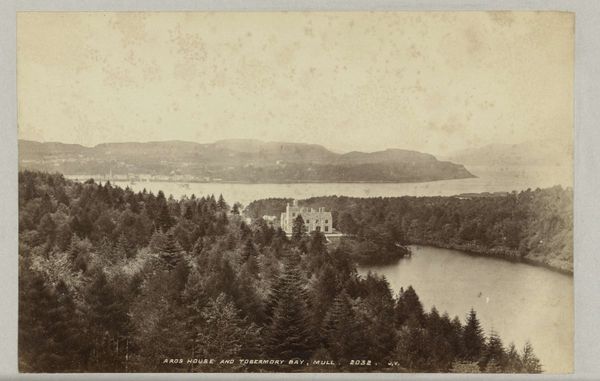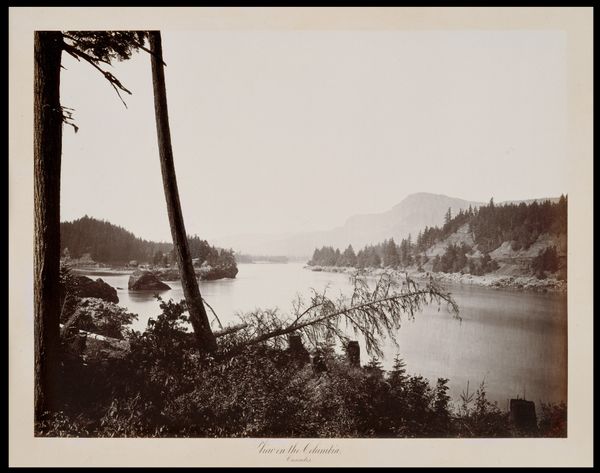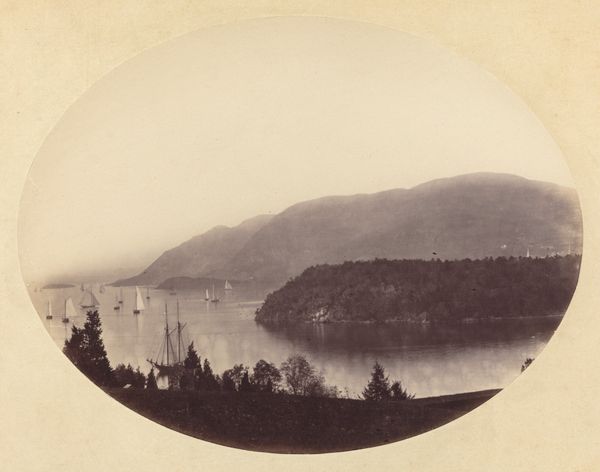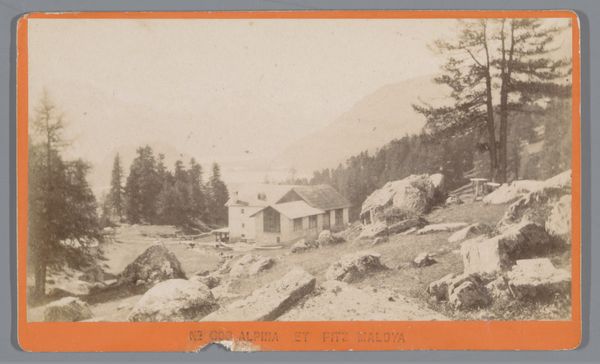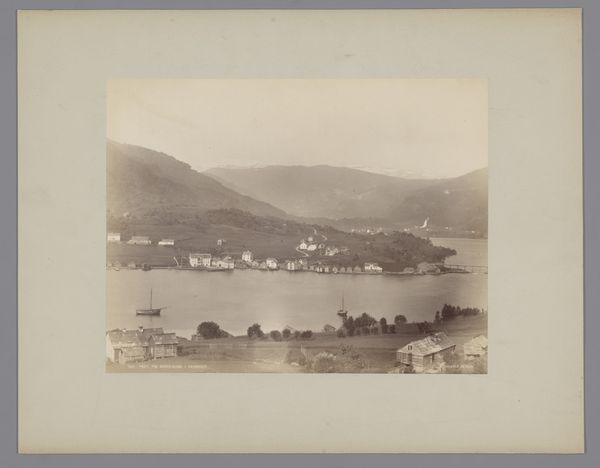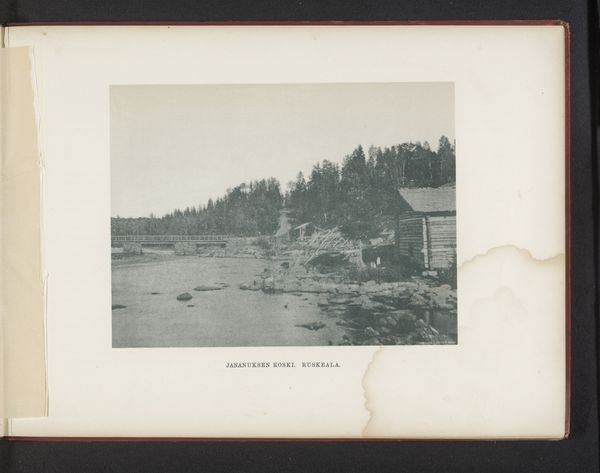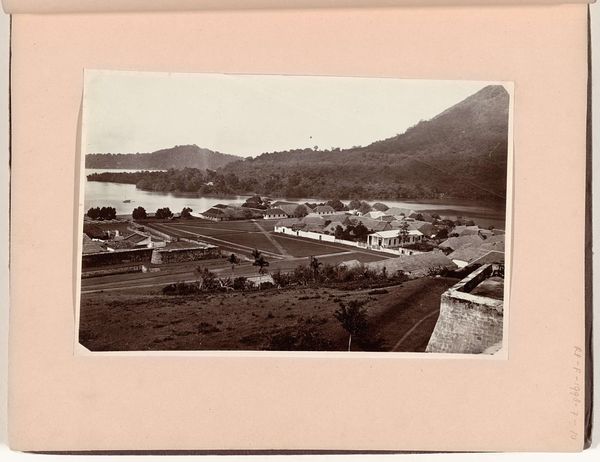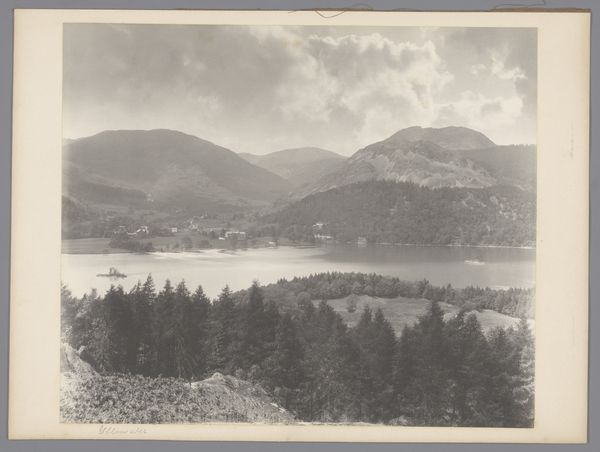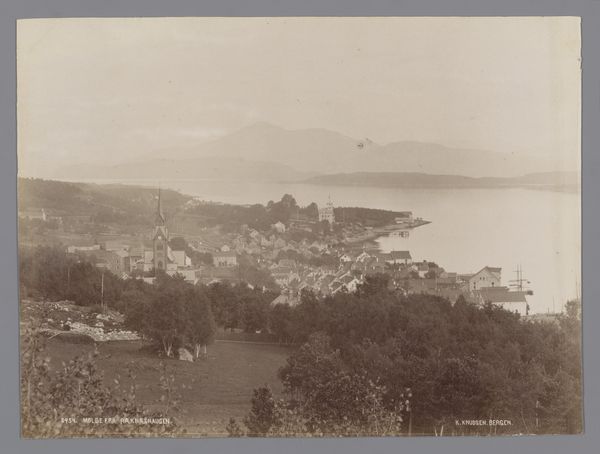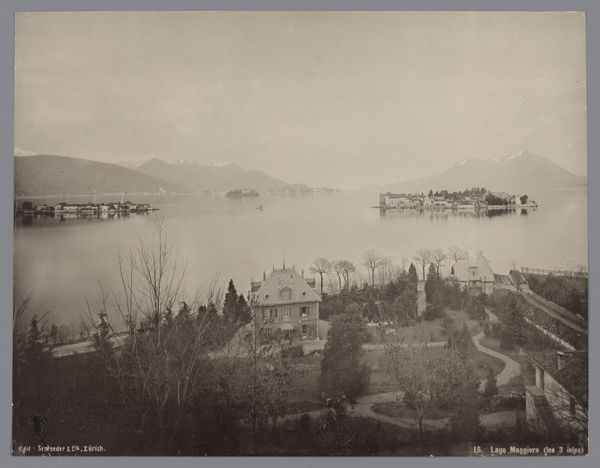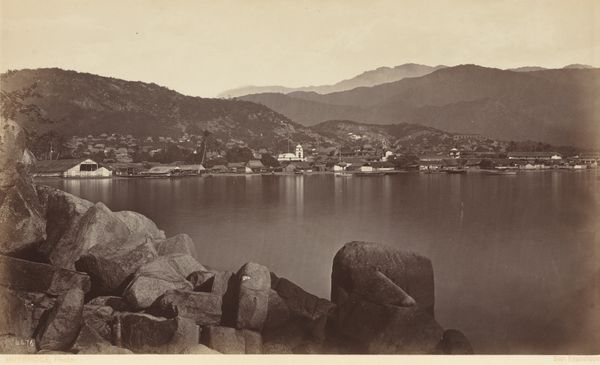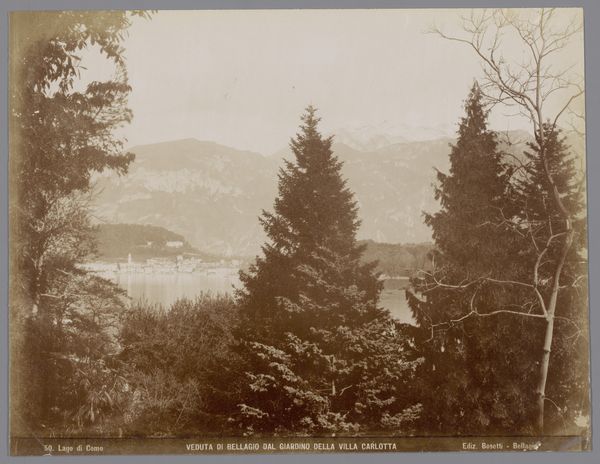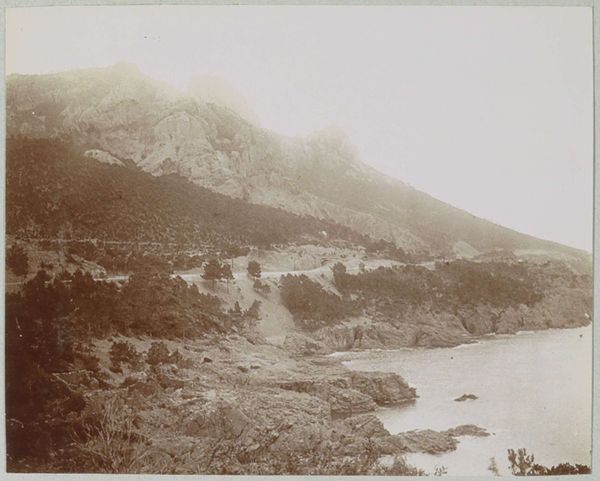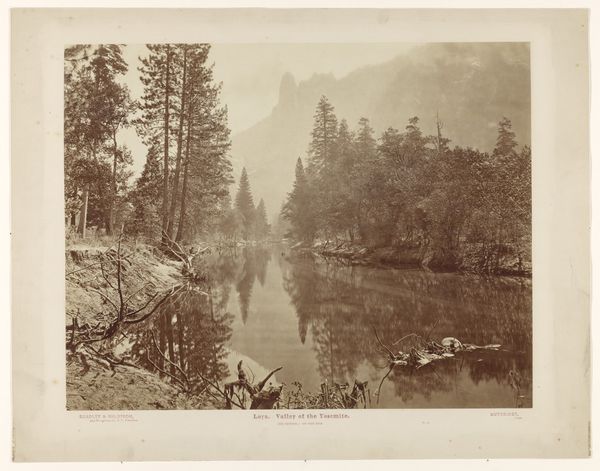
print, photography, gelatin-silver-print
# print
#
landscape
#
photography
#
gelatin-silver-print
#
hudson-river-school
#
realism
Copyright: Public Domain
Curator: "Islands in the Upper Cascades, Oregon" captured by Carleton Watkins around 1867... it's a gelatin silver print that really speaks to the Hudson River School aesthetic, doesn't it? Editor: There’s a strange stillness to this image. The tones feel muted, and the composition leads my eye on a circuitous route – around the islands, over the bridge, up that denuded hillside. It evokes a somber mood. Curator: Precisely, and Watkins created these images during a fraught period, not long after the Civil War, when westward expansion was intensely linked with ideas of American identity, opportunity, and, of course, Indigenous dispossession. His large-format prints often functioned as promotional tools, showcasing the West’s natural resources, but this work presents a rather complex view, doesn’t it? Editor: Yes, and I'm struck by how Watkins captures the tension between untouched wilderness and human intervention. The saw mill at the left, along with the bridge suggests industry and exploitation. Then you see the stumps, material evidence of resource extraction, impacting Indigenous communities whose ancestral lands were reshaped and diminished. The making of those bridges or the harvest of lumber becomes a critical part of understanding how Watkins depicts this territory. Curator: Right, it underscores a dialogue around environmental exploitation and manufactured images of the frontier. Who are these pristine landscapes really for? It begs the question: for whom is this vision of nature produced and for what means? It points to labor, social class, gender roles in settlement. Editor: Watkins' meticulous printing process also intrigues me. He wouldn't have just snapped a picture; there would have been preparation, glass plates, developing chemicals. His commitment to technical craft contrasts starkly with the ecological cost that the scene depicts. I suppose we might say this image performs some of the contradictions inherent to modernization. Curator: I agree. The visual impact of Watkins’ image remains tied to both the expansionist project, its gendered dimensions and to our ongoing renegotiation with landscape. It is never an easy relationship. Editor: It certainly gives one a lot to ponder when looking at this slice of the American West, and understanding the materials and making informs just how much is going on beyond a beautiful vista.
Comments
No comments
Be the first to comment and join the conversation on the ultimate creative platform.
